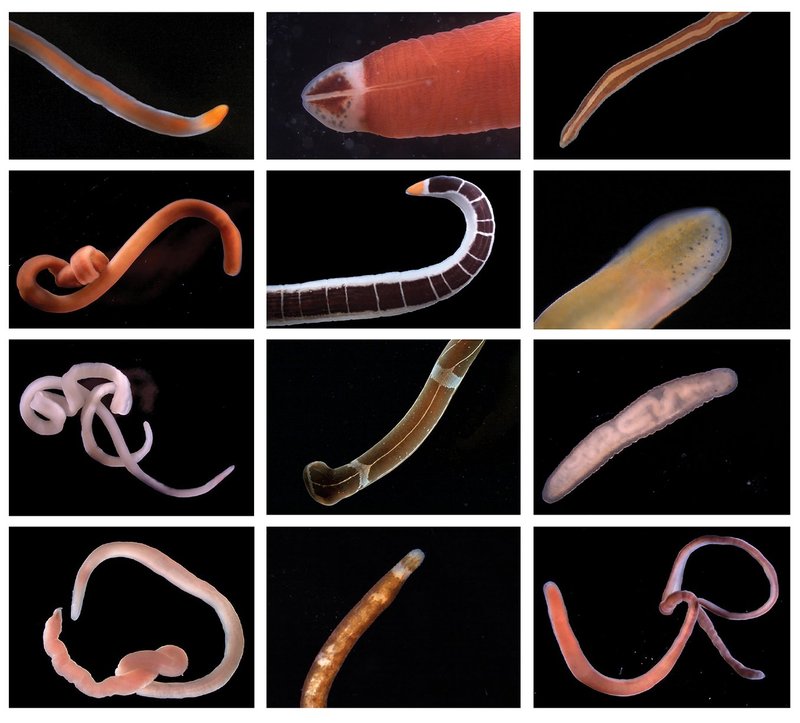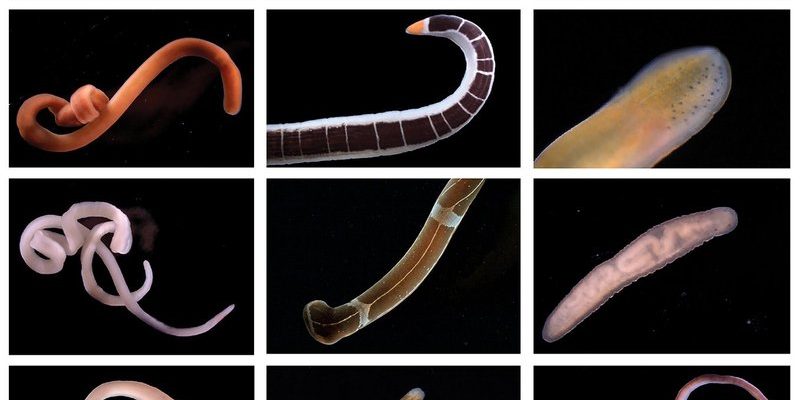
So, why should we care about these elongated, sometimes colorful worms? Well, they contribute to nutrient cycling, food webs, and even the health of ocean ecosystems. You might be wondering how a worm can hold such significance, but once you dive deeper—or should I say, worm your way into it—you’ll see just how essential they are. Let’s unravel the ecological importance of ribbon worms together.
What Are Ribbon Worms?
Ribbon worms belong to the phylum *Nemertea*. They’re typically long and slender, ranging from a few centimeters to several meters in length. You could think of them as the “spaghetti” of the marine world, often found in oceans, estuaries, and even some freshwater environments. Their bodies are soft and unsegmented, which makes them quite different from the more familiar earthworms.
These creatures have a unique feature that sets them apart: a long, retractable proboscis. This proboscis can shoot out and grab prey, making ribbon worms skilled predators. You might picture them using this appendage like a dart, snatching up smaller organisms such as small fish or crustaceans. This hunting technique not only helps them survive but also keeps populations of other marine creatures in check.
There are about 1,300 known species of ribbon worms, each with its unique characteristics. Some are brightly colored, while others blend in with their surroundings. This diversity is crucial because different species occupy various niches in the ecosystem, contributing to overall biodiversity.
The Role of Ribbon Worms in Nutrient Cycling
One of the most critical roles ribbon worms play is in the process of nutrient cycling. Think of them as nature’s recyclers. As they feed on organic material in the sediment, they break it down into simpler compounds, which then become available for other organisms to use. This decomposition is vital for maintaining a healthy ecosystem.
When ribbon worms consume detritus, they help release essential nutrients like nitrogen and phosphorus back into the soil and water. These nutrients are the building blocks for plants and phytoplankton, which form the base of the food web. Without ribbon worms, the efficiency of nutrient cycling would decline, potentially leading to a less productive and unhealthy marine environment.
Additionally, their burrowing activities aerate the sediment, allowing for better water movement and gas exchange. This is important for other organisms living in the sediment, such as bacteria and small invertebrates, which also contribute to nutrient cycling.
Ribbon Worms as Prey: A Crucial Link in Food Webs
Now, you might be thinking, “Okay, they recycle nutrients, but what about their role as food?” Well, here’s the thing: ribbon worms are a key food source for many marine animals, including fish and birds. Their presence in the ecosystem supports a range of predators, creating a rich food web that keeps everything in balance.
When fish munch on ribbon worms, they’re not just getting a meal; they’re also gaining essential nutrients that help them grow and thrive. Similarly, larger marine mammals, like seals, rely on various creatures in the food web, including ribbon worms, to sustain their diets. This interconnectedness illustrates just how vital these worms are to maintaining biodiversity in their habitats.
Moreover, if ribbon worms were to decline or vanish, it could send shockwaves throughout the food web. Predators would lose a food source, which could lead to decreased populations or even local extinctions. This domino effect emphasizes the importance of ribbon worms in keeping marine ecosystems healthy and vibrant.
Habitat Engineers: The Impact of Ribbon Worms on Their Environment
Ribbon worms don’t just live in their habitats; they actively shape them. By burrowing into the sediment, they create spaces that allow other organisms to thrive. Think of them as nature’s construction workers, digging and moving dirt to create a more livable environment for a variety of marine life.
By changing the structure of the sediment, ribbon worms influence the distribution of nutrients and oxygen within their habitats. This promotes the growth of seagrasses and other aquatic plants that rely on healthy sediment. These plants, in turn, provide additional habitat and food for countless species, forming a vital part of the ecosystem.
Their burrowing also helps control the sediment’s composition, affecting how it holds water and nutrients. This is essential for maintaining healthy aquatic environments, especially in areas prone to changes caused by human activity or climate change.
Ribbon Worms and Climate Change Resilience
As we see climate change increasingly impacting ecosystems worldwide, ribbon worms might play a role in helping their habitats adapt. Their ability to break down organic matter and recycle nutrients becomes even more crucial as ocean conditions shift due to rising temperatures and changing acidity levels. Healthy populations of ribbon worms can help maintain the productivity and resilience of marine ecosystems.
Moreover, as the ocean warms, some species of ribbon worms may shift their ranges. This can lead to changes in the food web and nutrient dynamics, affecting everything from small fish to larger marine mammals. Understanding how these worms respond to climate change can help scientists predict and manage the impacts on broader ecosystems.
This resilience makes ribbon worms key players in the fight against climate change, as their ecological functions help sustain marine health in challenging conditions.
Protecting Ribbon Worms and Their Habitats
Given their importance, protecting ribbon worms and their habitats should be a priority. Unfortunately, many marine environments are under threat from pollution, habitat destruction, and climate change. Here’s where you can step in—supporting conservation efforts is vital.
You can start by promoting clean water initiatives, reducing plastic waste, and advocating for policies that protect marine areas. Participating in community clean-ups can also make a difference, as every little effort contributes to healthier ecosystems.
Additionally, raising awareness about the ecological importance of ribbon worms helps garner support for their conservation. When more people understand how these overlooked creatures contribute to the health of our oceans, we can bring about positive changes to protect them.
Final Thoughts: The Unsung Heroes of Our Oceans
Ribbon worms may not win any popularity contests, but their ecological importance cannot be overstated. They play crucial roles in nutrient cycling, food webs, habitat engineering, and even climate change resilience. By appreciating and protecting these fascinating creatures, we can help maintain the delicate balance of ocean ecosystems.
So, next time you think about the creatures that share our planet, remember the ribbon worm. They’re like the quiet workers behind the scenes, tirelessly supporting marine life. By understanding their role, we empower ourselves to become advocates for the health of our oceans, ensuring a sustainable future for all marine inhabitants.

